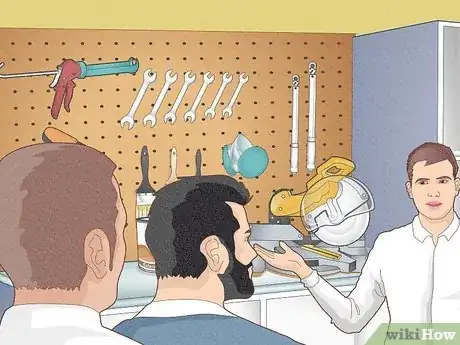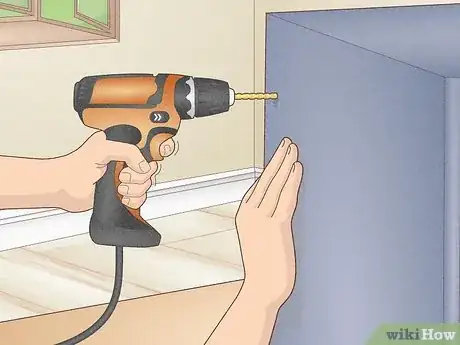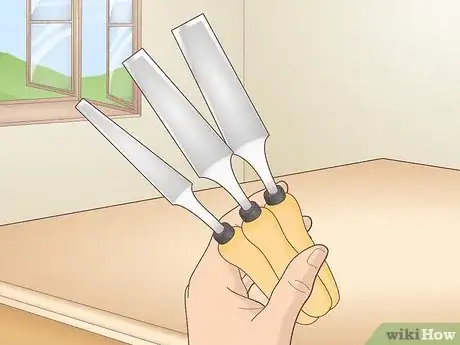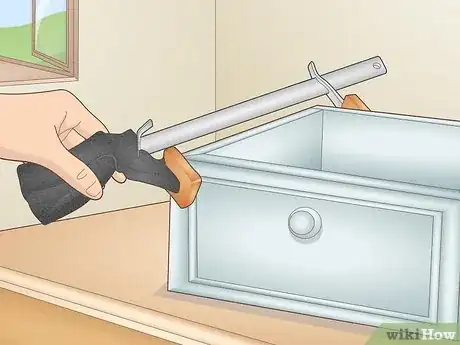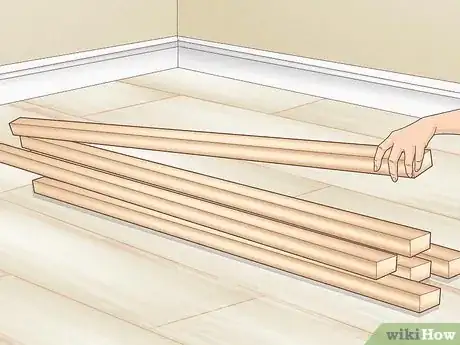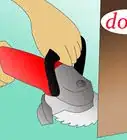This article was co-authored by Sam Hubbard and by wikiHow staff writer, Hunter Rising. Sam Hubbard is a Professional Carpenter and the Owner of Hubbard Carpentry and Remodeling. He has over 19 years of experience in the industry. Sam specializes in kitchen remodels, home woodworking, cabinetry, and handyman services.
There are 16 references cited in this article, which can be found at the bottom of the page.
This article has been viewed 3,737 times.
Woodworking is a rewarding hobby to get into, but where can you build your projects when you're lacking garage space? Even though a garage may be a good spot for a shop, you don't need one at home to get started woodworking. We'll go over everything you'll need to know as a beginner, like where you can find a place to work, what tools you'll need, and how to make materials easier to work with.
Steps
Where can you do woodworking without a garage or shop?
-
1You can do basic woodworking at home in a well-ventilated area. Even if you don’t have a garage, you can do a lot of smaller woodworking projects right at home with handheld tools. A basement, spare room, balcony, or outdoor patio are all perfect places. All you need to start is a sturdy work surface, like a counter or kitchen table, and enough space to easily move around while you handle your tools.[1] X Research source
- Make sure there’s a window or good ventilation wherever you’re working to help get rid of sawdust.
- Try to work in an area that has hard floors so they’re easier to clean up. If you only have carpet, lay down floor protection film to capture the sawdust.
- Using power tools might be too noisy for your neighbors in an apartment. Check with your landlord to see what you’re allowed to do.
- Close the door to the room where you’re working or put up temporary plastic walls to keep the mess contained.
- You may be able to set up a small workshop in a storage unit, but it depends on the rules of the facility where you’re renting.
-
2Look for a community workshop if you don’t want to buy your own tools. Search the name of your city and “community workshop” to see if there are any centers or woodworking clubs that have a shop. For a membership fee, you’ll have access to all of the tools you’d need to complete a woodworking project from start to finish. Many community workshops have employees that can train you on tools so you can learn how to safely use them.[2] X Research sourceAdvertisement
-
3Take a woodworking class to learn the basics and access a workshop. If you’re a true beginner and want to give woodworking a shot, look for a class you can take at a community college or city center. You’ll usually start with a basic project, like carving a spoon or making a cutting board, so you can get used to the basic tools and techniques.[3] X Research source
- If you’re more serious about woodworking or carpentry as a career, you could be an apprentice for a professional.
What do you need for a small woodworking shop?
-
1Circular saw A circular saw easily cuts straight, clean lines through lumber and plywood and take up a fraction of the space a standard table saw would. You can use a circular saw that plugs into the wall or is battery-operated.[4] X Research source
- You can store a circular saw in its case in a closet or under your bed until you need to use it.
- You can get similar cuts with a handsaw though it’ll be a little tougher to maintain long straight lines.
- If you want to splurge, you can get a portable table saw that sits on a tabletop to get perfectly straight cuts.
-
2Drill A lot of woodworking projects require you to bore holes for fasteners, so pick up a power drill and a set of drill bits. While a corded drill gives you more power, a battery-operated drill might be more portable if you’re working in a tight space.[5] X Research source
- To drill more precise holes, put a drill guide attachment onto your drill to keep the bit straight.
-
3Orbital sander Rough edges could give you a splinter or stand out on a finished piece, so an orbital sander smooths out the surface quickly. Since a sander fits right in the palm of your hand, it doesn’t take up a lot of space but it will save you a lot more time than if you were sanding by hand.[6] X Research source
- In a pinch, you can sand by hand with sandpaper, but that may take a lot of elbow grease when you start working on larger projects.
-
4Chisels A chisel set is great if you’re woodworking at home since the hand tools are small, don’t make a lot of noise, and are easy for a beginner to use. You can use a chisel to carve wood and cut mortise joints by hand.[7] X Research source
- Chisel sets usually come in a storage case, but you could also hang your tools on pegboard.
-
5Tape measure and square It’s important to measure all of the wood correctly so they line up in your woodworking project. Use a tape measure to check for accurate measurements. A speed square also gives you another way to measure angles and mark your wood to ensure all of your lines and cuts are straight.[8] X Research source
- If you need to draw long straight lines for a project, get a straightedge ruler instead.
-
6Clamps A set of clamps act as an extra set of hands when you need to hold something in place. Clamps come in handy when you need to hold a piece of wood steady while you’re cutting it or if you’re joining 2 pieces of wood that need to be held together tightly.[9] X Research source
- Having clamps in a few different sizes gives you a little more versatility with the projects you can do.
-
7Workbench You can probably get by working at a kitchen table when you’re first starting out, but put down a thin sheet of plywood to protect the surface.[10] X Research source If you want something that’s easy to move and set up, get a portable workbench that you can pop open whenever you want to do a woodworking project.[11] X Research source
- If you have a room where you can permanently set up a workbench, organize your tools on shelves nearby.
-
8Safety glasses and dust mask A pair of safety glasses protects your eyes from any wood pieces or dust that could kick back towards you when you’re using your tools. Since you don’t want to breathe in sawdust while you’re working, put on a dust mask that covers your nose and mouth completely.[12] X Trustworthy Source US Occupational Safety and Health Administration U.S. government agency responsible for setting and enforcing workplace safety standards Go to source
-
9Shop vacuum Woodworking makes a ton of sawdust, especially when you use power tools in a small space. You can attach a shop vacuum with a HEPA filter directly to an output port on your tool to help suck up the sawdust and avoid a mess. Even if you can’t connect the vacuum to your tools, it’s great to have around when it’s time to clean up.[13] X Research source
How do you make lumber more manageable in a small woodworking shop?
-
1Get pre-planed dimensioned lumber. Raw lumber doesn’t have a uniform thickness, and planing the wood by hand takes a lot of time and energy. Dimensioned wood comes in standard sizes for most projects, ranging from 1 in × 2 in (2.5 cm × 5.1 cm) up to 2 in × 10 in (5.1 cm × 25.4 cm). Since it’s already planed, you can use it right away in your woodworking projects.[14] X Research source
-
2Ask the store to cut your wood down to size. If getting full-length boards and large sheets of plywood to your workspace is a challenge, let the employees at the lumberyard or hardware store know the sizes you need. While they may not give you a cut precisely to your measurements, they’ll trim pieces down to their approximate size.[15] X Research source
- Some stores may offer to trim the wood for free while others will charge a fee for each cut.
Easy Woodworking Projects for Beginners
-
1Shelves You can make sturdy shelves out of basic plywood and screws, so they’re a great project if you’re just getting into woodworking. Try to build smaller bookshelves or try your hand at making floating shelves on your wall.[16] X Research source
-
2Birdhouse If you want a classic build you can do with kids, making a birdhouse is a really simple project to start with. Since you only need to make a simple box with an entrance hole, it only takes a few tools and supplies to complete.[17] X Research source
-
3Planter box If you want to spruce up a garden, you can easily build a planter box with the tools you have at home. Since you can customize the size of the planter box to the size that works best, you’ll be able to easily make one that easily fits in your space.[18] X Research source
Warnings
- Power tools can cause serious injuries if you don’t use them properly, so always be cautious and read the instructions before you start working.⧼thumbs_response⧽
You Might Also Like
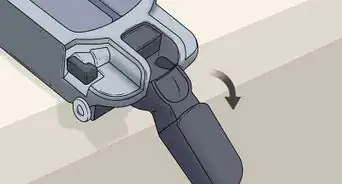



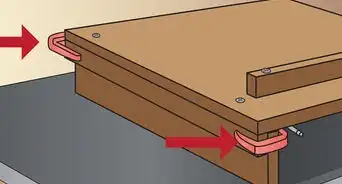

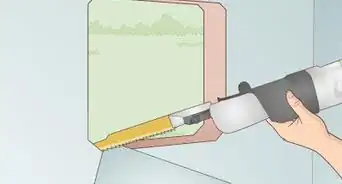

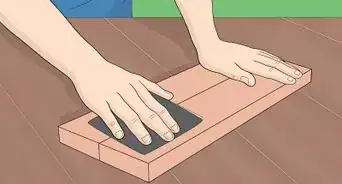
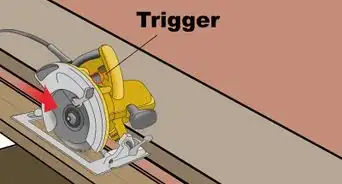


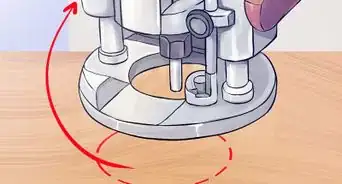
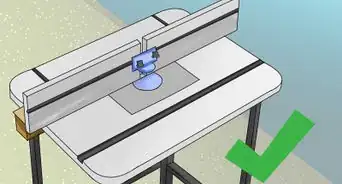
References
- ↑ https://www.bobvila.com/slideshow/7-ways-to-set-up-your-home-workshop-48197
- ↑ https://www.woodmagazine.com/workshop/inspiring-shops/enter-the-makerspace
- ↑ https://youtu.be/hLT1M9O0K0c?t=433
- ↑ https://youtu.be/1DgGgPrnUAs?t=70
- ↑ https://wood-create.com/2020/06/25/whats-in-your-workshop-basic-woodworking-tools-to-get-you-started/
- ↑ https://amazingarchitecture.com/articles/a-woodworking-guide-for-beginners-everything-you-need-for-your-first-build
- ↑ https://youtu.be/GjUFlrSsPDw?t=762
- ↑ https://amazingarchitecture.com/articles/a-woodworking-guide-for-beginners-everything-you-need-for-your-first-build
- ↑ https://youtu.be/1DgGgPrnUAs?t=90
- ↑ https://youtu.be/x5hbCDEk9iE?t=81
- ↑ https://www.bobvila.com/articles/diy-projects-without-full-workshop/
- ↑ https://www.osha.gov/sites/default/files/publications/osha3157.pdf
- ↑ https://www.woodmagazine.com/woodworking-tips/techniques/outfitting-woodworking-shop/dust
- ↑ https://www.bobvila.com/articles/diy-projects-without-full-workshop/
- ↑ https://www.bobvila.com/articles/diy-projects-without-full-workshop/
- ↑ https://youtu.be/aWoycQK9Msg?t=47
- ↑ https://dwr.virginia.gov/wp-content/uploads/make-a-bird-house.pdf
- ↑ https://youtu.be/Pho0-IgFUac?t=74
About This Article



